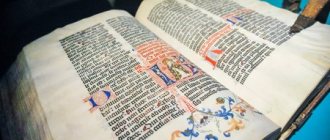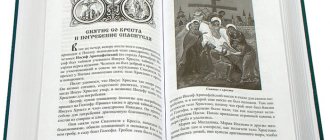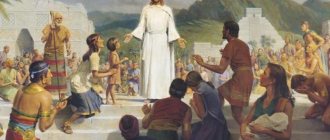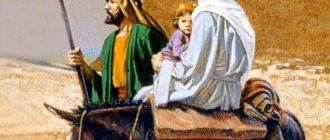Bible Questions and Answers
Published 03/18/2013
How can you prove the reliability of the Bible - the New Testament and the Old Testament? If the Bible was written so long ago and has been translated in many different ways and rewritten so many times, how can we be sure that the version we read today is not a complete fabrication?
Answer:
Bible Reliability
Let me give you a very brief answer to my question and then ask you to read the article below to present some basic evidence for the reliability of the Bible. First of all, it is true that the Bible was written a long time ago, but this in no way creates a problem for our faith in its authenticity, in its message and in its inspiration, if we assume that what we read is in fact an accurate reflection what was originally written. Age is not a problem. The problem is the accuracy of the transmission. Below I deal with this issue in great detail. It is also true that over time many have translated Scripture in different and rather contradictory ways. My answer to this is that if we have the original, you don't have to worry about different and conflicting interpretations. You can read it for yourself and decide for yourself what the meaning of the biblical texts is. You don't have to rely on others, but you can read it and come to your own conclusions. I believe that the overall message of the Bible is clear and consistent throughout. Don't take my word for it, you should read it for yourself.
All of these questions boil down to what appears to be your big question. How can we know that what we read is what was originally written, what was originally revealed to Jesus, Isaiah, David, Solomon and Moses. Popular books and films such as “The Da Vinci Code” have attempted to make people doubt the reliability of the Bible—our New and Old Testaments—and have had some success. However, these books do not present a real picture of the evidence. The answer is that we have scriptures that have come down to us with amazing accuracy. The evidence of thousands of manuscripts, most prominently the Dead Sea Scrolls, makes this conclusion compelling. As a result, those who claim that the Bible was radically rewritten are either unaware of this evidence or they are grossly exaggerating. As you will see below, we have an almost exact original of the New Testament in Greek. In the Old Testament, a few more changes occurred during its transmission, but we can be sure that essentially we have the same words of the Old Testament writers that were in the very beginning.
Wonderful collection
In this article we explore some of the most frequently asked questions about the Bible. Where did she come from? Who decided what exactly would be on the official list of accepted scriptures? How do we know if the Bible we read today is an accurate version of the scriptures that were in the beginning? Has any people or religious group modified the Bible to suit their own beliefs? Are all parts of the Bible equally reliable? Who wrote the books of the Bible, and how can I be sure? What about the different versions? If the original writings can be assumed to be inspired, what about the translations we read?
These are the questions that should come to the mind of any thinking person who reads the Bible at all. Some would say that asking such questions shows a lack of faith. It says in 2 Timothy 3:16 that all Scripture is inspired by God. For me this settles the matter. Why are you asking these annoying questions? Unfortunately, this attitude will not make such reasonable questions go away. In fact, buried issues have a habit of resurfacing at the most inopportune times. A better approach is to write down all the important questions, and systematically, one by one, over a period of time, seek reasonable answers to those questions.
Many argue that the Old Testament contains a number of myths and legends that were created by Jewish writers two or three centuries before Christ or shortly after. Others will argue that most of the New Testament was written at the end of the second century AD. Christian apologists who created a Jesus who was very different from the historical figure. They argue that the Gospels are not eyewitness accounts at all. Another common claim is that the original letters of the apostles were radically edited by the Catholic Church in the post-conversion period of the Roman Empire to reflect Catholic doctrine. These people claim that the doctrines found in the New Testament are very different from the original teachings of Jesus Christ. Still others will argue that there were additional gospels written by apostles that were excluded by early church leaders because of their prejudice against certain teachings.
Are these statements worthy of attention? What is the history of the writing and composition of both the Old and New Testaments? How faithful were the originals? These questions will be answered in this chapter.
It may seem logical to consider the origin and history of the Old Testament before the New Testament for the obvious reason that it was written first.
However, for a number of reasons, we will consider the evidence for the New Testament first. The New Testament was written over a shorter period of time. It will be much easier to trace the origins of the New Testament canon. In addition, the availability of manuscripts and different versions makes it possible to more easily trace the evidence in the case of the New Testament.
Before considering the evidence for the origin of the New Testament, it will be useful to define a few technical terms, some of which have already been used.
Manuscript
For us, a manuscript is any ancient document that contains all or part of the New or Old Testament. This word literally means handwritten.
Manuscripts may be in the original language or they may be translations from the original language. Manuscripts are the primary materials available that can be used to attempt to reconstruct the original biblical writings.
Canon
The Canon of the New or Old Testament is the officially accepted list of books that are included in the Holy Scriptures. How the canon of the New Testament and the Old Testament was arrived at is a very important question that will be addressed in this chapter.
Scroll
A long piece of material, usually leather, that contains a number of document pages written in rows arranged in columns, designed to be folded and stored. This was the basic form of manuscripts before the coming of Christ (2 Tim. 4:13).
Code
A long piece of either leather or papyrus, folded in a format basically like a modern book. This was the most common form of manuscript after about 200 AD.
Papyrus
Papyrus is a reed plant found primarily in the Nile Delta. They split it and rolled it out. Horizontal and vertical layers were glued together to create a lightweight, easy-to-use writing pad. Unfortunately, papyrus is the material of ancient writing that is least likely to survive over a long period without decaying.
Vellum paper, parchment
These are two specially prepared types of leather that were commonly used as writing material. Parchment was made from sheep or goat skin, while vellum paper was made from calf skin or antelope skin. When papyrus became scarce in the first centuries AD, vellum paper became the main material for manuscripts.
Uncial
These are manuscripts that are written using all capital letters. The oldest Greek manuscripts are written in uncial script.
Italics
These are manuscripts that use both uppercase and lowercase letters, similar to modern writing styles. Later manuscripts in Greek are usually written in italics.
Coptic Gospel of Thomas
Undoubtedly, the most famous gospel from the Nag Hammadi library is the Coptic Gospel of Thomas (not to be confused with the Infancy Gospel of Thomas discussed above). Given its importance, I will devote more attention to the analysis of its message than I did for the gospels discussed above.
From the very moment of its discovery, the Gospel of Thomas has caused considerable controversy. One of the main questions under discussion is this: is it best understood as a Gnostic gospel or not? In my view, even though the Gospel of Thomas lies entirely within the Gnostic system of ideas and is clearly clear to its readers, it presupposes the Gnostic system in much the same way as I described it in chapter 2. Jesus in this The gospel is a divine being, the bearer of revelation of secret knowledge that can liberate from this vicious material world. He is depicted here not simply as a human prophet, but as a revelatory deity. This image is based on a Gnostic understanding of the world and our place in it.
The text of the New Testament and its reliability
All Scripture is inspired by God (2 Timothy 3:16), but how do we know that the words we read in our Bible are the same as those written by the writers of that Scripture? Over the years, many have tried to undermine confidence in the Bible by arguing that what we read has only a very tenuous connection to the original writings. These same people often claim that many of the books of the Bible were written many generations and even hundreds of years after the events recorded, calling into question their historical accuracy.
In the case of the New Testament, some scholars argue that most of it was written in the second half of the second century AD. Others have pointed out that there are over two hundred thousand errors in the manuscripts we use to reconstruct the Greek text of the New Testament, implying that we can only guess at what was in the original writings. Still others have argued that the Catholic Church made significant changes to the Bible, especially in the fourth and fifth centuries, in order to remove objectionable teachings and add language that would support their particular doctrines. What is the history of the text of the New Testament, and is there any validity to these claims? Let's look at these questions.
First, we must remember that the original books of the New Testament were written in Greek. [1] To restore an accurate New Testament means to restore the original Greek text. Do we have the original Greek text of the New Testament or a copy absolutely identical to it? The answer is simple: no. The original letters of Paul, probably written on papyrus, have long since perished. The same can be said about the original Gospels. To spread the teachings of the apostles more widely, their letters were copied many times and distributed among the churches.
Thus, the accuracy of our Greek text depends on how carefully the early Christians made copies. How can we be sure that we have the original scriptures in our possession? This question leads us to the evidence provided by the Greek New Testament manuscripts.
The most famous translation of the Bible into English is the King James Bible. This translation was first published in 1611. The team of scholars who compiled the King James Bible relied on a translation made by William Tyndale some eighty years earlier. The complete Greek text of the New Testament became available to the Western world only with the work of the Dutch scholar Erasmus. His New Testament in Greek was published in 1516. When Erasmus composed his text, he had only about five Greek manuscripts at his disposal, none of them older than the ninth century AD. At that time, of course, it was accepted that those manuscripts differed significantly from the original.
Today everything is very different. Scholars have nearly ten thousand Greek manuscripts to work with to reconstruct the original Greek text. For comparison, let's say that Tyndale and Erasmus had less than ten manuscripts at their disposal. Moreover, some of these manuscripts are several hundred years older than those available to the first translators of the Greek text into English. Let's look at a list of some of the most important Greek New Testament manuscripts.
- Codex Vaticanus or Codex B. The Codex Vaticanus is written on vellum paper on 759 pages in uncial script. The manuscript has been dated to around 350 AD. e. It contains the entire New Testament except Hebrews 9:13 through, 1 and 2 Timothy, Titus, and Revelation. It also contains the entire Old Testament in Greek, except the first few chapters of Genesis and a few psalms. The manuscript has been kept in the Vatican since at least 1481.
- Codex Sinaiticus, or Codex Aleph. The Sinaitic Manuscript gets its name because it was discovered at St. Catherine's Monastery on Mount Sinai in 1844 by biblical scholar Tischendorf. It was found in a basket of old parchments that were about to be thrown into the fire. This manuscript is now in the British Museum. Like the Vatican manuscript, it was dated to approximately 350 AD. e. It contains most of the Old Testament in Greek, but most importantly, it contains the entire New Testament in Greek.
- Codex Alexandrinus, Codex A. This is a fifth-century codex containing most of the Old Testament and all of the New Testament, except for a few pages from the Gospel of Matthew, two from the first letter of John, and three from the second letter to the Corinthians. This manuscript was found in Alexandria, Egypt, but was given as a gift to the King of England in 1621. The manuscript is currently in the British Library.
- Washington Manuscript. This late fourth century manuscript contains the four Gospels. It is especially important because it contains Mark 16:9-20, unlike the three manuscripts we have already mentioned.
- Chester Beatty Papyri. This is a collection of several papyrus codex fragments located in the Chester Beatty Museum in Dublin, Ireland. One of the papyri contains thirty leaves of the New Testament in Greek, which have been dated to the late second or early third century (that is, around 200 AD). Another, dated to the early third century, includes 86 of the 104 leaves of Paul's letters.
- Bodmer Papyri. This is a group of manuscripts found in the Bodmer Library of World Literature. Includes complete manuscripts of the Gospels of Luke and John, dating from 175-225. n. e., as well as manuscripts of more than half of the book of the Gospel of John, dated 150 AD. e.
- Fragment by John Ryland. This papyrus fragment contains only John 18:31-33 and 37, 38, which would not make it a significant find except that it was dated to 130 AD. e. This fragment was copied within fifty years of the death of the Apostle John.
Russian modern translation
Years of publication: 1993, 1997, 2002, 2014 Publisher: Bible League International (USA) Publisher's website: bibleleague.org
The first editions of 1993, 1997 and 2002, called Modern Bible Translation, were published by the World Bible Translation Center (WBTC), which later became part of the International Bible League.
2002 edition
The 2014 edition differs in both the binding of the book and the new edition of the text. The cover of the new edition reads: “The Holy Bible. Modern translation". On the spine and in the publication information there is the abbreviation RSP - “Russian Modern Translation”.
2014 edition
This edition contains brief footnotes to individual words (with numerical indexes), a Glossary of Biblical Terms, and geographic maps. There is no cross-referencing system.
ADDITIONAL INFORMATION
The Preface to the 2014 edition states: “This translation is from the original languages of Scripture. The New Testament is based on the United Bible Societies Greek New Testament (4th revised edition, 1993) and the Nestle-Aland Novum Testamentum Graece (27th edition, 1993). The Old Testament, Psalms and Proverbs are translated from the Hebrew Masoretic texts contained in bk Biblia Hebraica Stuttgartensia (1984). In some cases, the original source was the text of the Dead Sea scrolls, as well as the Septuagint (LXX), but only in cases where the text predates all known Hebrew manuscripts."
Eastern translation
Years of publication: 2003, 2009, 2013 Publisher: International Bible Society Biblica / Biblica, Inc. (USA) Publisher's website: biblica.com (Wikipedia page)
The Preface states: “Although other translations of the Holy Scriptures into Russian already exist, many in the Caucasus and Central Asia felt the need for a new translation that would preserve, highlight and emphasize the cultural and religious features characteristic of the East - the oriental flavor that originally existed in Scripture "
This translation is aimed at representatives of eastern peoples who speak and read Russian, and was created primarily for missionary and spiritual-educational purposes.
ADDITIONAL INFORMATION
The cover reads: “The Holy Scripture: A Meaningful Translation of the Taurat, the Book of the Prophets, the Zabur and the Injil.” Publishing house "Istanbul". Sometimes “Contemporary translation (CARS)” is added to the name of the translation. The abbreviation CARS means “Central Asian Russian Scriptures” (Central Asian Scriptures in Russian).
The publication contains a section “Verses of the Holy Scripture for Every Day”, several Appendices, an Explanatory Dictionary and several tables. At the beginning of each book of the Bible there is an introduction and contents, the text is divided into parts by headings. There are brief footnotes to individual words (with letter indices). There are no cross-references or geographic maps.
Recovery translation
Year of publication: 2014 Publisher: Living Stream Ministry (USA) Publisher's website: lsm.org | kbk.ru










